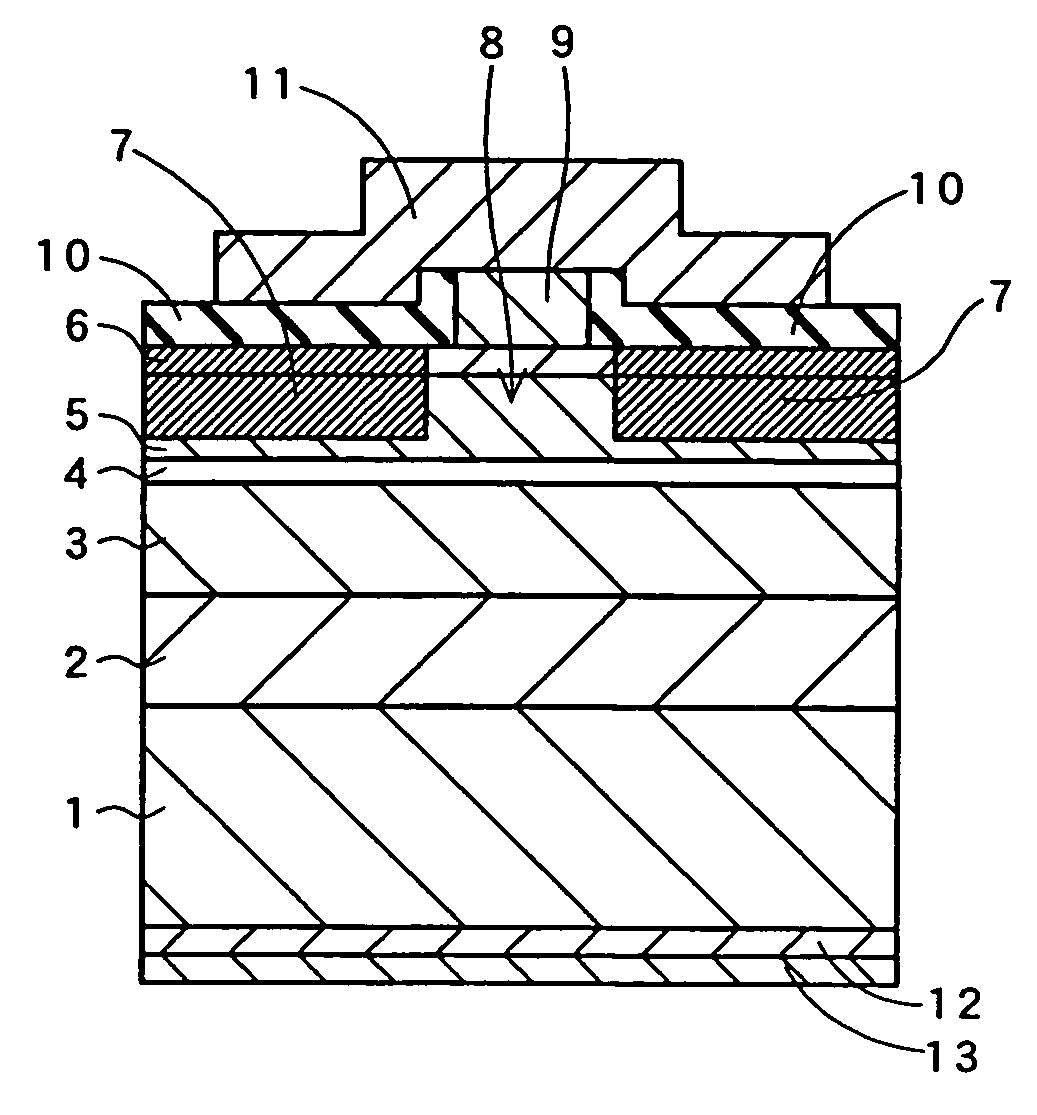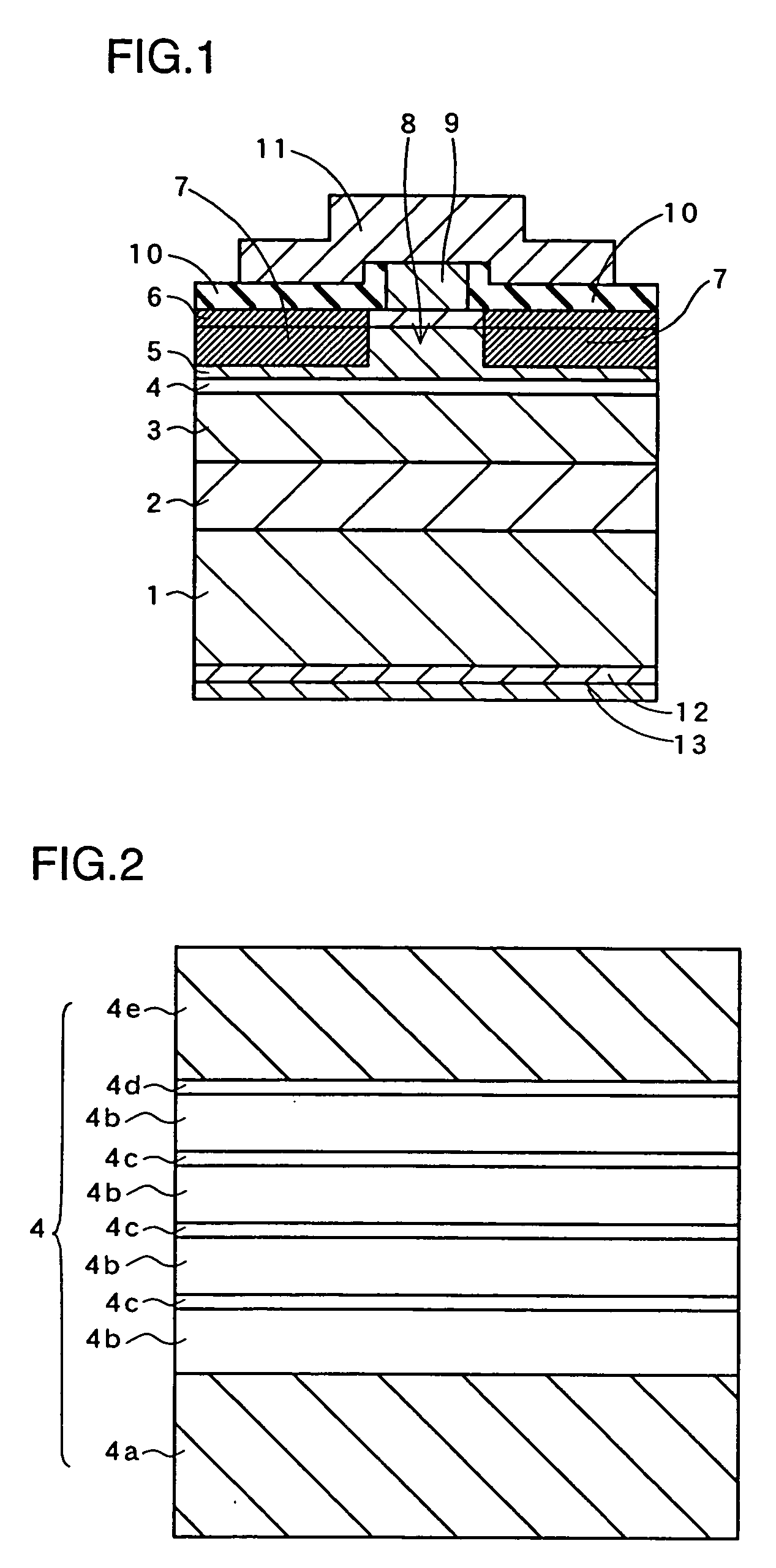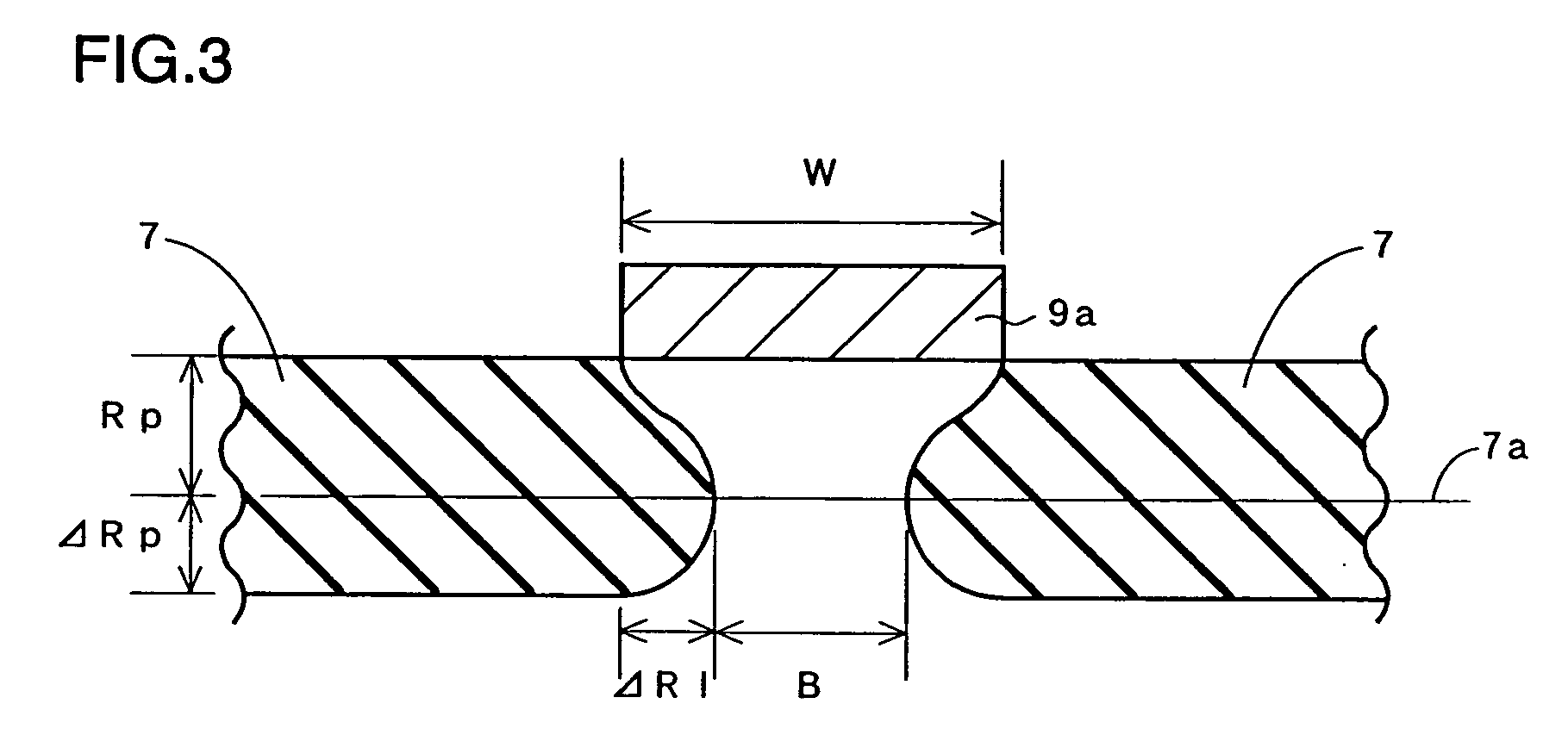Nitride semiconductor laser element
a technology of nitride and laser elements, which is applied in the direction of lasers, lasers, semiconductor devices, etc., can solve the problems of disadvantageous reduction of the fabrication yield of the nitride semiconductor laser element, difficult to strictly control the etching depth, and difficult to control the transverse optical confinement with excellent reproducibility, etc., to achieve easy suppression of excessiveness, suppress the increase of the threshold current, and inhibit the effect of excessive etching depth
- Summary
- Abstract
- Description
- Claims
- Application Information
AI Technical Summary
Benefits of technology
Problems solved by technology
Method used
Image
Examples
tenth embodiment
[0376] Referring to FIG. 44, a case of forming current narrowing layers and light absorption layers through two ion implantation steps respectively similarly to the eighth embodiment is described with reference to this tenth embodiment. In this tenth embodiment, the current narrowing layers were formed with a low dose in order not to introduce excess crystal defects into crystals. The remaining structure of the tenth embodiment is similar to that of the seventh embodiment.
[0377] Referring to FIG. 44, an n-type layer 2, an n-type cladding layer 3, an MQW emission layer 4, a p-type cladding layer 5 and a p-type contact layer 6 are formed on an n-type GaN substrate 1 in this order according to this tenth embodiment, similarly to the first embodiment.
[0378] According to the tenth embodiment, silicon is ion-implanted into partial regions of the p-type cladding layer 5 and the p-type contact layer 6, thereby forming current narrowing layers 97a having a thickness (implantation depth) of...
eleventh embodiment
[0390] Referring to FIG. 47, an example of forming current narrowing layers by thermal diffusion of hydrogen atoms while forming light absorption layers by ion implantation of silicon is described with reference to this eleventh embodiment. In a nitride semiconductor laser element according to this eleventh embodiment, the current narrowing layers are formed over an n-type cladding layer, an MQW emission layer, a p-type cladding layer and a p-type contact layer. The remaining structure of the eleventh embodiment is similar to that of the first embodiment.
[0391] Referring to FIG. 47, an n-type layer 2, an n-type cladding layer 3, an MQW emission layer 4, a p-type cladding layer 5 and a p-type contact layer 6 are formed on an n-type GaN substrate 1 in this order according to this eleventh embodiment, similarly to the first embodiment.
[0392] According to the eleventh embodiment, current narrowing layers107a formed by thermally diffusing hydrogen are formed on partial regions of the p...
twelfth embodiment
[0404] Referring to FIG. 52, a case of forming current narrowing layers and light absorption layers extending over an n-type cladding layer, an MQW emission layer, a p-type cladding layer and a p-type contact layer by ion-implanting silicon twice respectively is described with reference to this twelfth embodiment. The remaining structure of the twelfth embodiment is similar to that of the first embodiment.
[0405] Referring to FIG. 52, an n-type layer 2, an n-type cladding layer 3, an MQW emission layer 4, a p-type cladding layer 5 and a p-type contact layer 6 are formed on an n-type GaN substrate 1 in this order according to this twelfth embodiment, similarly to the first embodiment.
[0406] According to the twelfth embodiment, silicon (Si) is ion-implanted into partial regions of the layers from the n-type cladding layer 3 to the p-type contact layer 6 thereby forming current narrowing layers 117b having a thickness (implantation depth) of about 0.73 μm over the n-type cladding laye...
PUM
 Login to View More
Login to View More Abstract
Description
Claims
Application Information
 Login to View More
Login to View More - R&D
- Intellectual Property
- Life Sciences
- Materials
- Tech Scout
- Unparalleled Data Quality
- Higher Quality Content
- 60% Fewer Hallucinations
Browse by: Latest US Patents, China's latest patents, Technical Efficacy Thesaurus, Application Domain, Technology Topic, Popular Technical Reports.
© 2025 PatSnap. All rights reserved.Legal|Privacy policy|Modern Slavery Act Transparency Statement|Sitemap|About US| Contact US: help@patsnap.com



